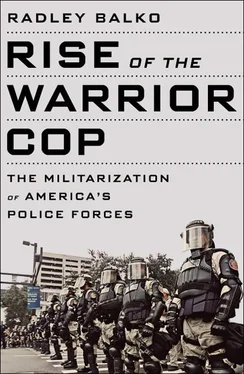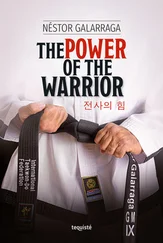The agents responded, “Police.”
Miller opened the door and asked what the police wanted. But before they answered, he shut the door in front of them. The police then ripped the chain off the door and entered the apartment. They found the $100 in marked bills, along with around one thousand heroin capsules. Miller and Bessie Byrd, who lived with him, were arrested and convicted on narcotics charges.
The police had never obtained a search warrant. Miller appealed his conviction, arguing that the entry into his home was illegal. 1In 1958 the US Supreme Court agreed with him.
Justice William Brennan’s opinion in Miller v. California was a spirited defense of the Castle Doctrine. “The requirement of prior notice of authority and purpose before forcing entry into a home is deeply rooted in our heritage,” Brennan wrote. “[It] should not be given grudging application.” 2
Regrettably Miller was effectively the last stand in defense of the home as a place of sanctuary. In the coming years, the Court would uphold searches far more egregiously violative than the search performed on Miller’s apartment.
The first blow came five years later, in Ker v. California . A sergeant with the Los Angeles County Sheriff’s Department had purchased a pound of marijuana from a man named Terrhagen in the parking lot of a bowling alley. Terrhagen told the sergeant that his “connection” was Roland Murphy, who at that time was out of prison on bail pending charges for distributing marijuana. The police put Murphy under surveillance. The next day, in the parking lot of the same bowling alley, they saw Murphy park behind a new car with a single occupant. From one thousand feet away, at night, they saw Murphy get out of his car and converse with the driver of the new car. The officers couldn’t see if anything exchanged hands between the two men. The police tried to follow the new car, but lost it when the driver made a U-turn. They checked the license plate with the state Department of Motor Vehicles and found that it belonged to George Douglas Ker. The police claimed that informants had told them in the past that Ker was known to sell marijuana.
The police then went to Ker’s address and found the car in the parking lot of an apartment building. They secured a passkey from the building manager and, without a warrant, simply walked into Ker’s apartment with no knock or announcement. Inside, they found a little over two pounds of marijuana. Ker and his wife were arrested.
The Ker v. California decision was complex. By an 8–1 vote, the Court concluded that the Fourth Amendment requirement that searches be reasonable applies to the states as well as the federal government, and that evidence obtained in unlawful searches is inadmissible. But the Court also found by a 5–4 split that the search of Ker’s apartment was lawful.
Writing for the majority, Justice Tom Clark found that the police had probable cause to arrest Ker, to search his home without a warrant, and to enter his home without first knocking and announcing themselves. Clark wrote that there are common-law exceptions to the knock-and-announce rule known as an “exigent circumstances.” One such exception is if police believe that a knock and announcement would result in the suspect destroying evidence. “In addition to the officers’ belief that Ker was in possession of narcotics, which could be quickly and easily destroyed, Ker’s furtive conduct in eluding them shortly before the arrest was ground for the belief that he might well have been expecting the police,” Clark wrote. Clark cited additional exigent circumstances as well. Police need not announce themselves if doing so would jeopardize their safety, if they are in the midst of an emergency, or if knocking would be a futile gesture, such as during the hot pursuit of a fugitive.
Justice Brennan was in the minority in Ker , and his dissent bristled with indignation. He began with a thorough history of the Castle Doctrine, even quoting James Otis. He made the point that the writs of assistance that helped inspire the American Revolution were less odious, in at least a couple of ways, than the search of George Ker: such writs could only be served in daylight hours, and they required a knock and announcement before entry. 3Brennan also questioned Clark’s assumption that the common law provided exceptions to the knock-and-announce requirement. “I have found no English decision which clearly recognizes any exception to the requirement that the police first give notice of their authority and purpose before forcibly entering a home,” he wrote. The only exception Brennan found that was possibly in contradiction of the Castle Doctrine’s intent was one allowing police to enter unannounced if they believe someone inside is in imminent danger of bodily harm. 4
It is generally accepted today even by critics of forced-entry police raids that officers should be allowed to enter a building or residence unannounced if the suspect is believed to be armed and likely to resist arrest if given the opportunity. After Ker v. California , it would soon be accepted by most policymakers that police should also be exempted from the knock-and-announce requirement if they believe that a knock and announcement would allow the suspect to destroy evidence. The courts have since held that police may enter at the scene of a search without announcing even with a regular warrant if they hear or see activity inside the residence that merely suggests someone is destroying evidence.
Brennan thoroughly rebuts all of those assumptions in his dissent. Though the principles he defends are backed by centuries of Anglo-American common law, his Ker opinion was one of the last times someone as prominent as a Supreme Court justice would articulate them. His first point is that to allow an exception for the possible destruction of evidence or out of fear for the safety of police officers is to “do obvious violence to the presumption of innocence.” In fact, Brennan writes, allowing for those exceptions violates the presumption of innocence twice: first by assuming the suspect is guilty of the crime for which he is suspected, and second by assuming he will attempt to escape, violently confront the police, or attempt to destroy evidence if the police are required to announce themselves.
Second, Brennan points out that to allow police to enter a home because they hear “loud noises” or “running” is to allow them to forcibly enter a home without announcement based on conduct that not only isn’t criminal, but is ambiguous. Since the police wouldn’t be permitted to prosecute someone for obstruction of justice based only on such sounds, so Brennan objected to the idea that the same sounds could be enough to allow police to enter a home without announcing.
But even accepting an exception that allows the police to enter unannounced if they hear or see activity suggesting that the suspect is destroying evidence, there was no evidence of such activity in the Ker trial record. The exception is based only on the officers’ testimony that narcotics suspects often attempt to destroy evidence when they realize the police are at the door. This, Brennan notes, was enough to create an exception to the knock-and-announce rule for any narcotics search—indeed, any search related to a crime involving evidence that can be easily and quickly destroyed. “The recognition of exceptions to great principles always creates, of course, the hazard that the exceptions will devour the rule,” Brennan writes.
Brennan also touches on a number of practical problems with the repercussions of the ruling. He points out the problem of mistaken identity in criminal investigations, warning that “innocent citizens should not suffer the shock, fright or embarrassment attendant upon an unannounced police intrusion.” That was a glimpse of the hundreds of “wrong-door” raids that would go down in the years to come. Brennan also points out the explicit danger that unannounced entries pose to police , writing that one common-law reason for the announcement requirement was “to protect the arresting officers from being shot as trespassers.” Here too he would be proven correct in the coming decades: dozens of police officers would be shot, maimed, and killed during unannounced raids—often by citizens who could plausibly claim that they thought they were firing at criminal intruders.
Читать дальше












